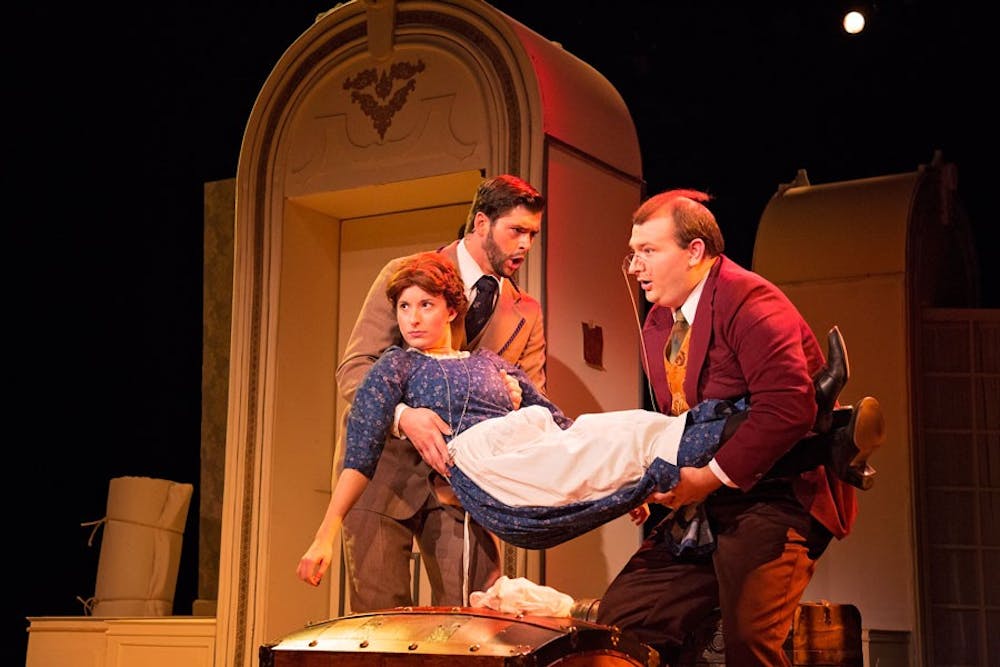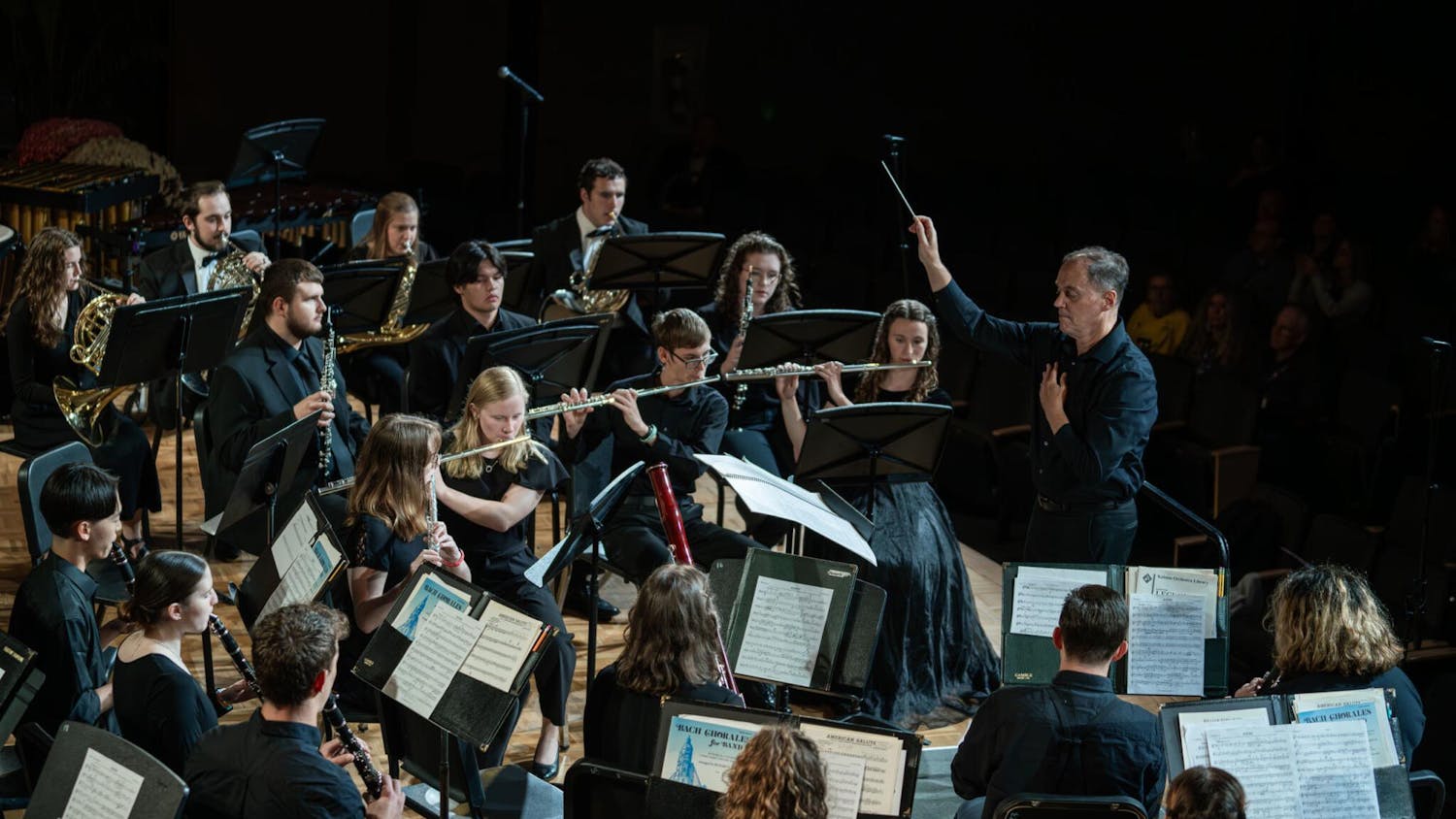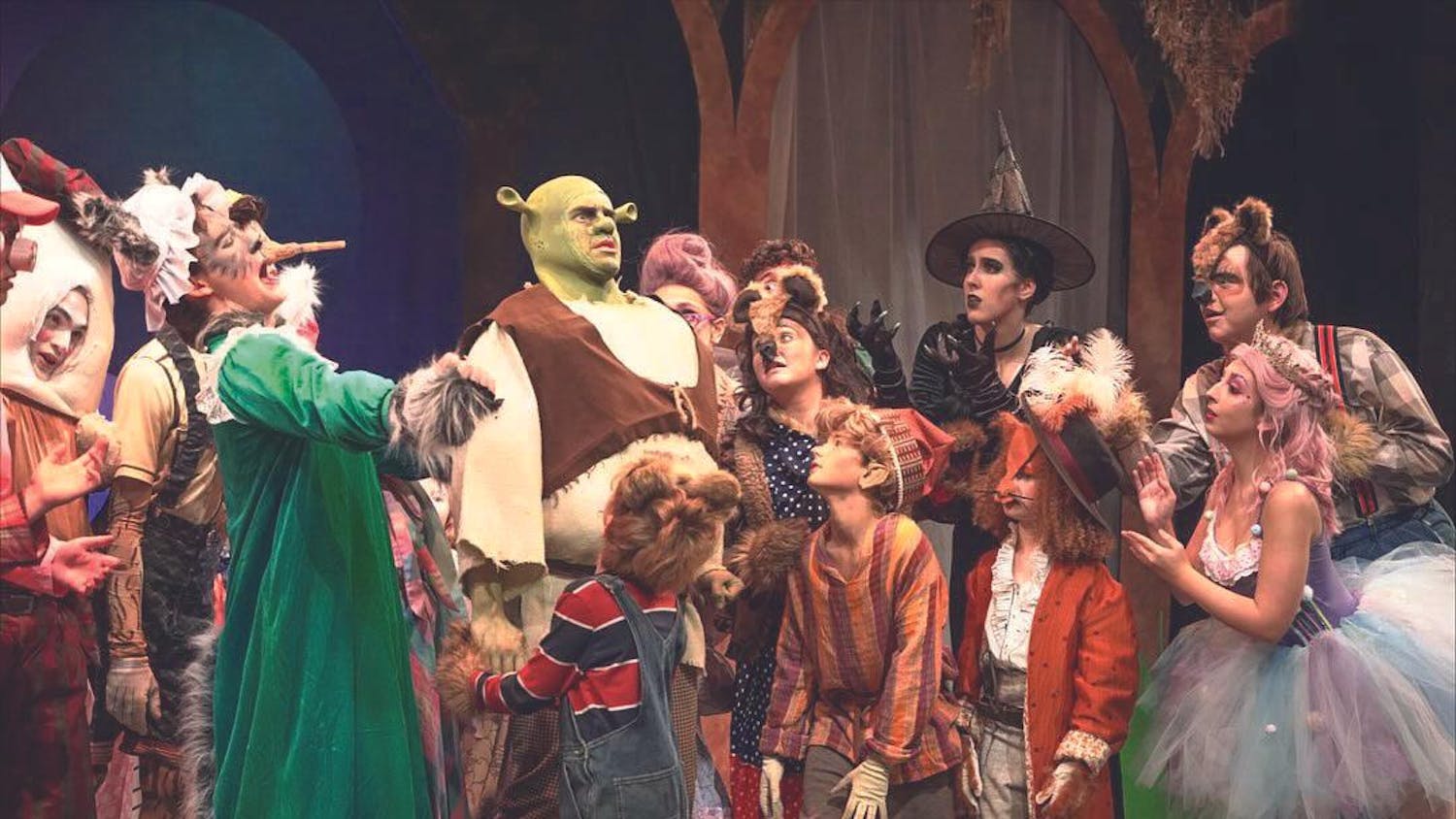By Austin Lindner | Echo
This weekend, the Taylor Theatre trades the puffs and frills of the 1700s for the high-collared drama of the early modern age in its rendition of "Marriage of Figaro."
In Artistic Director Tracy Manning and junior Alexis Colón's adaptation of Mozart's renowned opera buffa, the comedic antics of the plot are relocated from a castle in Seville to the elegant home of Lord and Lady Almaviva in early 20th century England.
Taking place over a single chaotic day, the opera follows Figaro, Lord Almaviva's valet, as he plans to marry his love Susanna, Lady Almaviva's maid. Susanna unfortunately catches the interest and affections of Lord Almaviva, who begins to make advances upon her behind his wife's back, scheming to put a halt to the happy couple's wedding. In retaliation, Susanna and Figaro team up with the scorned Lady Almaviva and a host of supporting characters to outwit their villain through a series of ridiculous twists and tricks.
The fast-paced and often ridiculous scenes take place on a simple, elegant set-complete with ornate white wooden structures representing the doorways and arches of the refined mansion. The set decorations are placed on a turntable, allowing the audience to follow scheming characters as they scurry from one end of the house to the other.
Beyond its change of century, Taylor's "Figaro" stands out from previous versions of the classic. Whereas traditional operas rely on recitatives (quickly sung lines of text and exposition), this modern day "Figaro" uses spoken dialogue in English to give the show more of a Broadway musical feel. Typical operas also tend to restrict mobility of their characters, while Taylor's "Figaro" throws its characters around the stage, allowing the actors to make the most of the physical comedy at their fingertips.
While the show's look has been updated from "Amadeus" to "Downton Abbey," the beautiful score remains the lifeblood of the show. Music and opera professor Conor Angell serves as music director and conductor for "Figaro," carefully guiding the Taylor Symphony Orchestra in the pit.
Rising and falling with each complication, the orchestra effectively breathes the drama happening on the stage a few feet above. The trill of violins suggests a brilliant idea hitting a character. The blaring of horns responds to a triumphant outcome to a stressful scene. The cellos stir restlessly when danger is present.
But the moments of true bliss are found in the harmonies between lovers-and sometimes even between enemies. With a skilled ensemble including many vocal performance students, the cast is more than capable of tackling each leap and crescendo in Mozart's difficult score.
In fact, the opera's brightest moments reside in its energetic performances. Junior theatre major Sean Sele practically tap-dances through his scenes with charisma and wit in his take on the protagonist, Figaro. His rich baritone voice fills the stage during solos, but his expression and smart comedic timing help him steal laughter from the audience.
His partner in comic crime is Susanna, played by sophomore Alexis Turner. Thanks to a defiant performance from the gifted soprano, Turner's Susanna refuses to be the object of Lord Almaviva's affection, or an object of anything at all. She is more than content to take the reins in the sneaky plans and subverts the damsel-in-distress stereotype every chance she gets.
"Keep licking your lips," she practically spits at the misbehaving Lord Almaviva with a glint in her eye.
Together, Turner and Sele provide a playful chemistry that keeps the plot fresh and engaging.
To combat this delightful pairing, there must be an equally capable force of opposition, and senior music major Evan Koons fits the bill. Koons carries the glee of a Disney villain to the stage through his portrayal of Lord Almaviva, blending a knack for physical comedy with a deep bass voice that would put Gaston to shame. With every scowl and sinister smile at the audience, Koons brings a likeability to the scoundrel that makes him enjoyable even in his most destructive moments.
But "Figaro" isn't just laughter and absurd situations. Performances like junior Jessica Schulte's as Lady Almaviva remind the audience that there is an underlying pulse to the show in which real relationships are in jeopardy. As Schulte wistfully sings "Where are they, the beautiful moments" while walking through her complicated household, we remember that the amusing infidelity of her husband does have personal ramifications.
It is this painful pulse that gives the show meaning beyond the antics of characters jumping out of windows or almost marrying their mothers. "Figaro" may be about the ridiculousness of life and the comedy in love and war, but the roots of the story are in interpersonal conflict and the forgiveness that goes beyond simply kissing and making up.
Behind all of the hype and high notes are important choices. When the one you love chases another, how do you respond? Who do you turn to when your own relationship crumbles through your fingers? When you are given the choice to take your betrayer back into your arms, what do you do?
While the different plot lines sometimes become difficult to untangle and words are occasionally lost in the intertwining melodies, these are the questions that "Figaro" presents, under an enjoyable guise of giggles. And as the music swells and hands you may not have expected are rejoined, you might be walking away with more than just a tickled funny-bone.
"Marriage of Figaro" will be performed Nov. 13, 14, 20 and 21 at 8 PM and Nov. 15 and 22 at 2 PM in the Mitchell Theatre. Tickets are $7-12.





